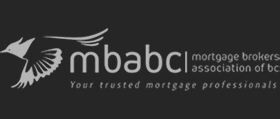What it means for mortgage holders
Hours after the BoC’s announcement, most of the country’s big banks raised their respective prime rates, which brings the country’s prime rate to 3.95%—a 125-bps increase since last summer.
Most adjustable-rate mortgage (ARM) holders and those with lines of credit will see their payments increase as of their next payment date. ARM mortgage holders can expect monthly payments to rise about $12 per $100,000 worth of mortgage.
Variable-rate holders won’t see their payments increase, but they will see the interest portion of their payments jump while their principal portion declines.
The average 5-year variable insured rate available from brokers, as tracked by Mortgage Dashboard, is now 2.88%, up from 2.31% a year ago.
That’s still a sizable discount off 5-year fixed rates, which have risen to an average of 3.43%, up from 2.95% a year ago thanks to the 5-year bond yield (which leads fixed mortgage rates) reaching a seven-year high.
With the current spread between fixed and variable rates, many mortgage shoppers are likely to find themselves asking the perennial question: do I go fixed or variable?
Laird says that in a rising rate environment consumers tend to gravitate towards the security of fixed rates.
“But anyone who plans to pay down their mortgage rapidly can still consider a variable rate mortgage,” he notes. “Even in a rising rate environment the variable is the better choice for those who will aggressively pay down their mortgage. For those who want certainty in their mortgage rate, a longer-term fixed (7- or 10-year) should be considered.”
Rob McLister, founder of RateSpy.com, says historical data doesn’t support ultra-long terms, like 10-year mortgages. But he agrees that variable rates can still be a good bet for new mortgages, if the borrower is financially stable and the rate discount is big enough. “A rate of prime – 1.00%, for example, changes your probability of success dramatically versus prime – 0.60%,” he said.
Over the long term, research shows “variable-rate mortgages win, and the higher rates go, the more they win,” he told BNN today. Still, he cautioned this isn’t always the case.
“Interestingly, in summer 2017 if you would have gotten a bargain 5-year fixed rate mortgage, you’d be way ahead of the game compared to a typical variable-rate mortgage holder today,” based on interest cost alone and assuming no changes to the mortgage since origination.
As for fixed rates, McLister says the hottest deals are in the insured market. That’s a boon for clients with less than a 20 percent down payment, or an already-insured switch. Insured rates remain as much as 35 basis points below the best uninsured rates, depending on the term.





